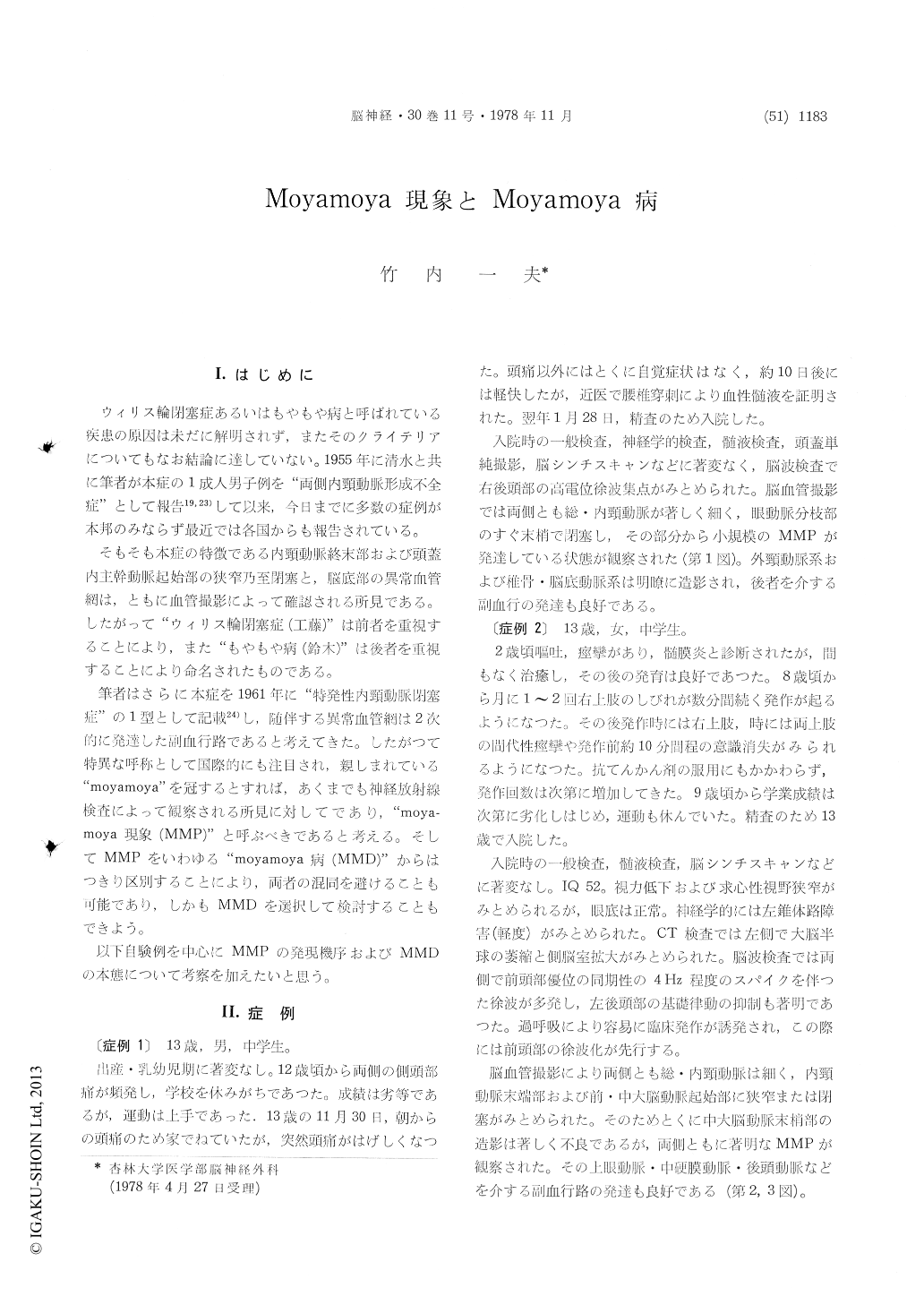Japanese
English
- 有料閲覧
- Abstract 文献概要
- 1ページ目 Look Inside
I.はじめに
ウィリス輪閉塞症あるいはもやもや病と呼ばれている疾患の原因は未だに解明されず,またそのクライテリアについてもなお結論に達していない。1955年に清水と共に筆者が本症の1成人男子例を"両側内頸動脈形成不全症"として報告19,23)して以来,今日までに多数の症例が本邦のみならず最近では各国からも報告されている。
そもそも本症の特徴である内頸動脈終末部および頭蓋内主幹動脈起始部の狭窄乃至閉塞と,脳底部の異常血管網は,ともに血管撮影によって確認される所見である。したがって"ウィリス輪閉塞症(工藤)"は前者を重視することにより,また"もやもや病(鈴木)"は後者を重視することにより命名されたものである。
An unverified disease called "Moyamoya Disease"or"Spontaneous occlusion of the circle of Willis"has been recently reported as a disease entity by some Japanese researchers. Since the first report of this disease by Shimizu and the author in 1955, many cases have been reported not only in Japan but in many countries outside Japan.
It has been already clarified either clinically or pathologically, that, in the Moyamoya Disease, the most important finding is the basal arterial occlusive change of unknown etiology and the Moyamoya Phenomenon is only nonspecific neuroradiological change as the extraordinary dilated collaterals viathe striate arteries, perforators etc. However, the real cause of the arterial obstruction is still obscure in the so-called "true Moyamoya Disease".
Further studies will be necessary in order to establish a new clinical entity related to the Moyamoya Disease. However, under existing situations, the Moyamoya Disease must be strictly differentiated from the Moyamoya Phenomenon which can be frequently observed among cases with basal occlusion of known and unknown origin.

Copyright © 1978, Igaku-Shoin Ltd. All rights reserved.


